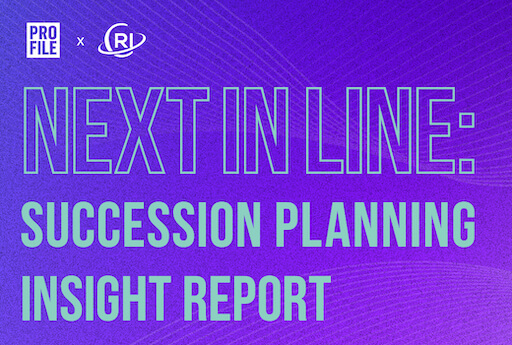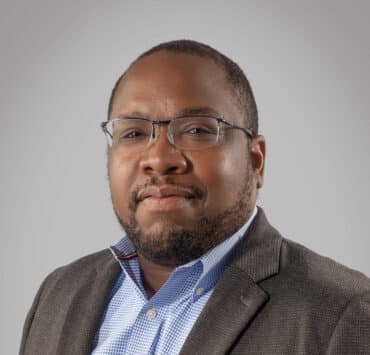|
Getting your Trinity Audio player ready...
|
On February 6, 2018, Wynn Resorts circulated a press release. The company’s official statement took just 366 words to share with “a collective heavy heart” that its leaders had “reluctantly” accepted CEO Steve Wynn’s resignation. The document went on to praise Wynn as an “industry giant,” a “beloved leader,” and a “visionary.” The company pledged to “continue to meet the high standards of excellence that Steve Wynn created and the Wynn brand has come to represent.”
Wynn himself issued a statement on the same day, lamenting the fact that he had “found [himself] the focus of an avalanche of negative publicity.”
Eleven days earlier, the Wall Street Journal had gone public with allegations of sexual harassment and assault made against the famed casino developer. With the #MeToo movement still in its infancy, Wynn was the first public company CEO accused. At the time, he was also finance chair of the Republican National Committee.
One can only imagine the emergency meeting Wynn Resorts’ leaders and board of directors called to craft their now infamous press release. Notably absent from its 366 words are terms like “responsibility,” “victim,” “apology,” “sorry,” “guilt,” and “regret.”
Later in that fateful month of February, Nevada state regulators hit the company with a $20 million fine for failing to respond to prior claims that Wynn had sexually harassed women. Another $35 million fine followed when the Massachusetts Gaming Commission found that other leaders had conspired to conceal his actions.
Numerous lawsuits, class action suits, allegations, and boardroom fights followed, sending Wynn stocks into a freefall. The most famous brand in the history of gaming was on the verge of a bust. In early 2022, Wynn marked cumulative two-year loss of more than 60 percent.
No board member, shareholder, or corporate communications officer expects to check the news only to discover that their CEO is marred in scandal, but in today’s world, unexpected PR disasters are more of a “when” than an “if.” Any company that stays in business long enough is bound to come face-to-face with an ill timed quote, a natural disaster, an unfortunate photograph, a high-profile termination, or even allegations of a serious crime.
Surviving such an ordeal can be difficult, but it’s possible. We sat down with three crisis experts who shared the top lessons they’ve learned over the course of their careers.
Mike Fernandez
Mike Fernandez was the second Latino and the youngest press secretary in the US Senate’s long history. He’s been on the inside of several Fortune 200 companies and has advised C-suite executives and board members at organizations like Eastman Kodak, Cigna, ConAgra, State Farm, and Cargill. In his many roles, Fernandez has focused on reputation management, media relations, and crisis communication. He’s been called upon to respond to hurricanes, shootings, protests, and product recalls, to name but a few types of incidents.
Fernandez says that when it comes to responding to a PR disaster, one thing is paramount—listening. “You have to hear and learn before you misspeak,” he says. “What matters most is the people who are most impacted. Learn as much as you can about the situation, and then address it with empathy.”
Like most in his profession, Fernandez has seen the good, the bad, and the ugly of public relations. He points to BP’s response to the April 2010 Deepwater Horizon oil spill as an example of what not to do.
After an explosion sent 210 million gallons of oil into the Gulf of Mexico, BP’s CEO Tony Hayward called the spill “tiny.” He lamented the pain it caused him personally, saying “I’d like my life back,” and attempted to spread the blame to other companies. President Barack Obama then summoned Hayward to testify before Congress and even went on television saying, “We will make BP pay for the damage their company has caused.” Bob Dudley replaced Hayward as BP’s CEO just three months after the spill.
Hayward was likely thinking about the estimated $3 billion in clean-up costs and how those costs would impact shareholder dividends. But he needed to think about—and acknowledge—other concerns as well. “You could be pennywise and pound foolish if you think only about the business calculus,” Fernandez notes. He urges executives to think instead about what their planned response will say about their company and its long-term commitments.
“What matters most is the people who are most impacted.”
Mike Fernandez
It’s a lesson Fernandez learned at Cargill when he oversaw the largest protein recall in the history of the United States. Leaders at his employer, a well-known meat processor, faced a dilemma. Consumers were reporting illness related to the consumption of ground turkey, but no expert could pinpoint the source of the problem with certainty. Additionally, Cargill was a business-to-business food provider and not a brand name—grocery customers would never associate the company with the problem. Should leaders issue a costly recall or not? That’s the question Fernandez had to help answer.
Although the data was inconclusive, Cargill wasn’t working in the dark. Maps of the illness overlapped with Cargill’s facilities at least 60 percent. That was enough for Fernandez. “I advised our leaders to consider our values as an organization. We need our customers and their customers to trust every product we put into the market,” he says. Fernandez advocated for a recall.
The order was issued. Cargill recalled thirty-six million pounds of meat and started voluntary inspections of its own facilities. A statement from Cargill’s Steve Willardsen contrasts with that of Wynn Resorts in tone as well as in content. “It is regrettable that people may have become ill from eating one of our ground turkey products,” Willardsen said. “For anyone who did, we are truly sorry.”
Although Cargill took a “near-term financial hit,” customers thanked the company for doing the right thing. Years later, when another company refused to pull a product in a similar situation, PBS Frontline used Cargill to demonstrate how a food company should respond to a public health crisis.
Rodrigo Sierra
Rodrigo Sierra is chief communications officer at the American Medical Association (AMA). The last two years have taught him invaluable lessons about spearheading an effective response during a public health emergency.
As disinformation and misinformation spread in the wake of COVID-19, the AMA and its leaders worked overtime to educate care providers, the press, and members of the public. As the pandemic began to wane, Sierra sought to publish a ten-page postmortem on his experience—the document ended up topping one hundred pages.
It contains five key lessons:
First, organizations need to step up and lead. “A crisis is an opportunity to reframe why you exist and align to your core values,” Sierra says.
Second, it’s important to maintain both flexibility and internal coordination. Collaboration is key.
Third, both luck and preparation are involved—you can control the preparation. Be prepared.
Fourth, lead with patience and humility. Be empathetic, and be understanding of your audience.
Lastly: go full speed, ask for help, bring in partners, and maintain an all-hands-on-deck attitude. “There is no such thing as half speed during a crisis,” Sierra remarks.
Daniel Andrés Sacerio
Organizations that choose to bring in help often turn to someone like Daniel Andrés Sacerio, vice president of crisis and reputation risk at PR and consultancy firm Edelman. Clients come to Sacerio for three main things—to prepare for a potential crisis, to respond to an exisiting crisis, or to recover from a recent crisis.
“The biggest thing any organization of any size can do is ensure they have a preparedness playbook,” he advises. “You have to be prepared for whatever situation you think will never happen to you.” Sacerio recommends that companies establish policies and responses that leaders can review and update each year. Disaster categories should include cybersecurity, natural disasters, acts of God, pandemics, man-made disasters, workplace violence, active shooters, protests, leadership changes, sexual harassment, and more.
When the unexpected happens, Sacerio works with his clients to make sure anyone who speaks or addresses the media is using only prepared statements. He helps them be clear and controlled. “Be transparent about what you can and can’t say, be proactive and not evasive, offer to follow up at a specific date and time, and then follow through so you don’t create a secondary crisis,” he advises.
Sacerio also reminds clients to maintain a commitment to diversity and inclusion. “The way crises hit communities may be very different, and you need people from these communities involved in crafting your response,” he explains. Companies that have talent from diverse backgrounds, professions, communities, and experiences will have the most effective plans.
P.T. Barnum is thought to have popularized the belief that there is no such thing as bad publicity. While anything may have helped Barnum sell circus tickets in the 1880s, today’s business leaders are living in different times. Bad publicity erodes trust, sinks stock prices, drives customers away, harms employee morale, and tarnishes brands.
However, bad publicity isn’t always bad news. Companies that handle tough times well and stay in control of the narrative can refocus the attention and turn difficulty into opportunity.















